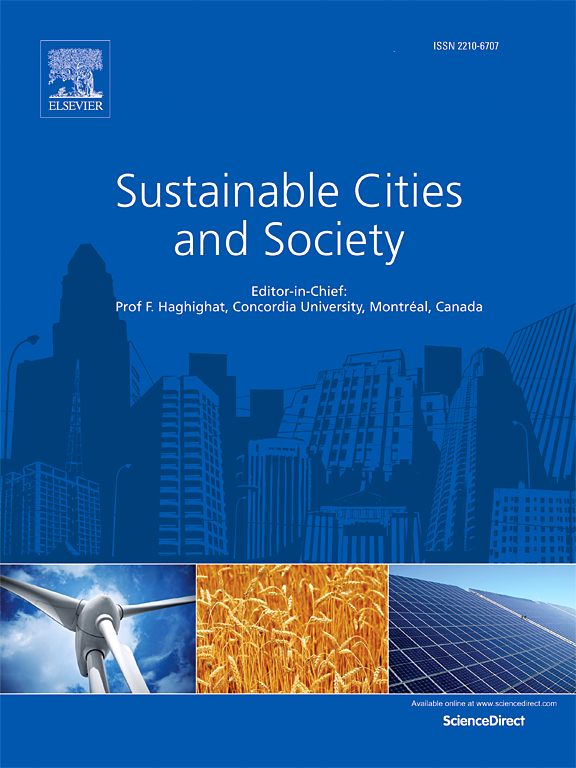Heat exposure assessment and comfort path recommendations for leisure jogging based on street view imagery and GPS trajectories
IF 10.5
1区 工程技术
Q1 CONSTRUCTION & BUILDING TECHNOLOGY
引用次数: 0
Abstract
Heat exposure significantly affects outdoor leisure activities and health. However, limited research has investigated the dynamic heat exposure assessments and comfort-based route recommendations for leisure jogging. This study addresses this gap by developing a framework that assesses real-time heat exposure and recommends comfortable routes for joggers based on street view images and GPS tracks. Specifically, we utilize Baidu street view images to dynamically estimate the mean radiant temperature (MRT). Individual joggers’ heat exposure is then assessed using real-time MRT measurements and jogging trajectories. To enhance jogger comfort, we developed a dynamic route recommendation method that combines the jogging comfort index with user preferences using a genetic algorithm, offering personalized jogging routes. Empirical analysis using actual data in Chengdu reveals that (1) MRT and heat risk areas exhibit significant spatiotemporal heterogeneity and clustering. (2) About 33.8 % of jogging tracks overlap with thermal risk regions, with 11 % intersecting high-risk areas, indicating substantial heat exposure for joggers in July. (3) The recommended jogging routes reduce heat exposure risk by 10 % compared to actual routes and a baseline model, demonstrating the approach's effectiveness. (4) The recommended routes, tailored to various needs, outperform the benchmark model, particularly in avoiding dynamic heat risk and providing personalized experiences. These insights can help guide leisure joggers to routes that offer a more comfortable and individualized environment.
求助全文
约1分钟内获得全文
求助全文
来源期刊

Sustainable Cities and Society
Social Sciences-Geography, Planning and Development
CiteScore
22.00
自引率
13.70%
发文量
810
审稿时长
27 days
期刊介绍:
Sustainable Cities and Society (SCS) is an international journal that focuses on fundamental and applied research to promote environmentally sustainable and socially resilient cities. The journal welcomes cross-cutting, multi-disciplinary research in various areas, including:
1. Smart cities and resilient environments;
2. Alternative/clean energy sources, energy distribution, distributed energy generation, and energy demand reduction/management;
3. Monitoring and improving air quality in built environment and cities (e.g., healthy built environment and air quality management);
4. Energy efficient, low/zero carbon, and green buildings/communities;
5. Climate change mitigation and adaptation in urban environments;
6. Green infrastructure and BMPs;
7. Environmental Footprint accounting and management;
8. Urban agriculture and forestry;
9. ICT, smart grid and intelligent infrastructure;
10. Urban design/planning, regulations, legislation, certification, economics, and policy;
11. Social aspects, impacts and resiliency of cities;
12. Behavior monitoring, analysis and change within urban communities;
13. Health monitoring and improvement;
14. Nexus issues related to sustainable cities and societies;
15. Smart city governance;
16. Decision Support Systems for trade-off and uncertainty analysis for improved management of cities and society;
17. Big data, machine learning, and artificial intelligence applications and case studies;
18. Critical infrastructure protection, including security, privacy, forensics, and reliability issues of cyber-physical systems.
19. Water footprint reduction and urban water distribution, harvesting, treatment, reuse and management;
20. Waste reduction and recycling;
21. Wastewater collection, treatment and recycling;
22. Smart, clean and healthy transportation systems and infrastructure;
 求助内容:
求助内容: 应助结果提醒方式:
应助结果提醒方式:


